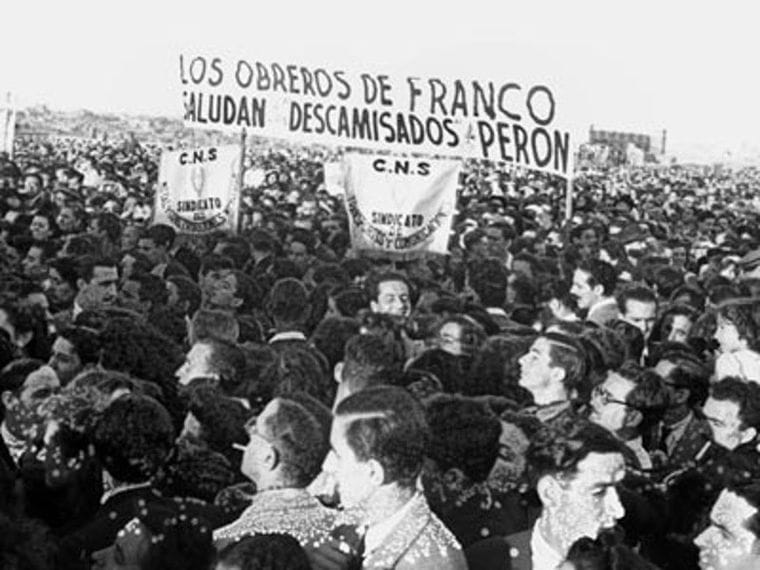Descamisados: Fashion and Politics in Argentina

In 1946, Juan Perón was elected as the President of Argentina. Juan Perón’s main supporters were members of the working class, because he promised to improve the economy, employment numbers, and general quality of life for working class citizens. Perón needed to prove that he valued his citizens, and one way that he did this was through clothing.
At the time, wearing a suit jacket was a sign of high social status for men. Any man wearing a jacket expected respect. Beyond a superficial indicator of status, these suit jackets-or lack thereof-had a significant impact of the lives of Argentinians. Certain streets and districts were off-limits to men who did not wear jackets. Because of this, many of Perón’s opponents called his poor, jacket-less supporters “descamisados.” “Descamisados” directly translates to “shirtless,” but in this context is intended to mean “those who do not wear jackets.” It was a derogatory term insulting Perón’s supporters for what they could not afford.
While campaigning in 1945, Juan Perón organized a huge rally in a plaza at the center of Buenos Aires. During the rally, Perón gave a morale-boosting speech where he declared that he and his supporters would “have [their] heart properly placed beneath [their] shirts, which is better than having it improperly under a jacket!” Perón would always remove his suit jacket when around members of the working class, supposedly to symbolically show how much he supported them. However, Perón would only do this when around his supporters, so perhaps it was more performative than symbolic.
After giving his speech, Perón waved a flagpole with a white shirt tied to it before a cheering crowd. Péron reclaimed the title “descamisadoes” with pride, and it soon became the term that his followers were known as. Both Perón’s speech and his makeshift-flag-waving served to reinforce the idea that he aimed to improve the lives of the lower classes. It was this that helped him gain the support that eventually won the election for him. However, some of Perón’s adversaries claimed that by waving that flagpole, Perón was insulting the Argentinian flag. Soon, Perón was arrested for treason. Fortunately for Perón, he was released shortly after his arrest, but only because of the sheer number of protests held by members of the working class. Perón’s campaign, which got him arrested, gained him the support that led to his release. Soon, going out without a jacket became a show of support for Perón; a symbol of pride rather than something that many were ashamed of.
Unfortunately, once Perón was elected, he was very controlling. He ran a totalitarian government that suppressed the rights of his citizens and the voices of anyone who dared to oppose him. He used violence and over-policing as a means of control, and this contrast between his promises and actions led to a lot of division within his own party. In 1955, Perón was overthrown by his opposition and sent into exile for the next eighteen years, but not without having a significant impact on both politics and fashion in Argentina.
Resources
https://www.britannica.com/topic/Peronist

